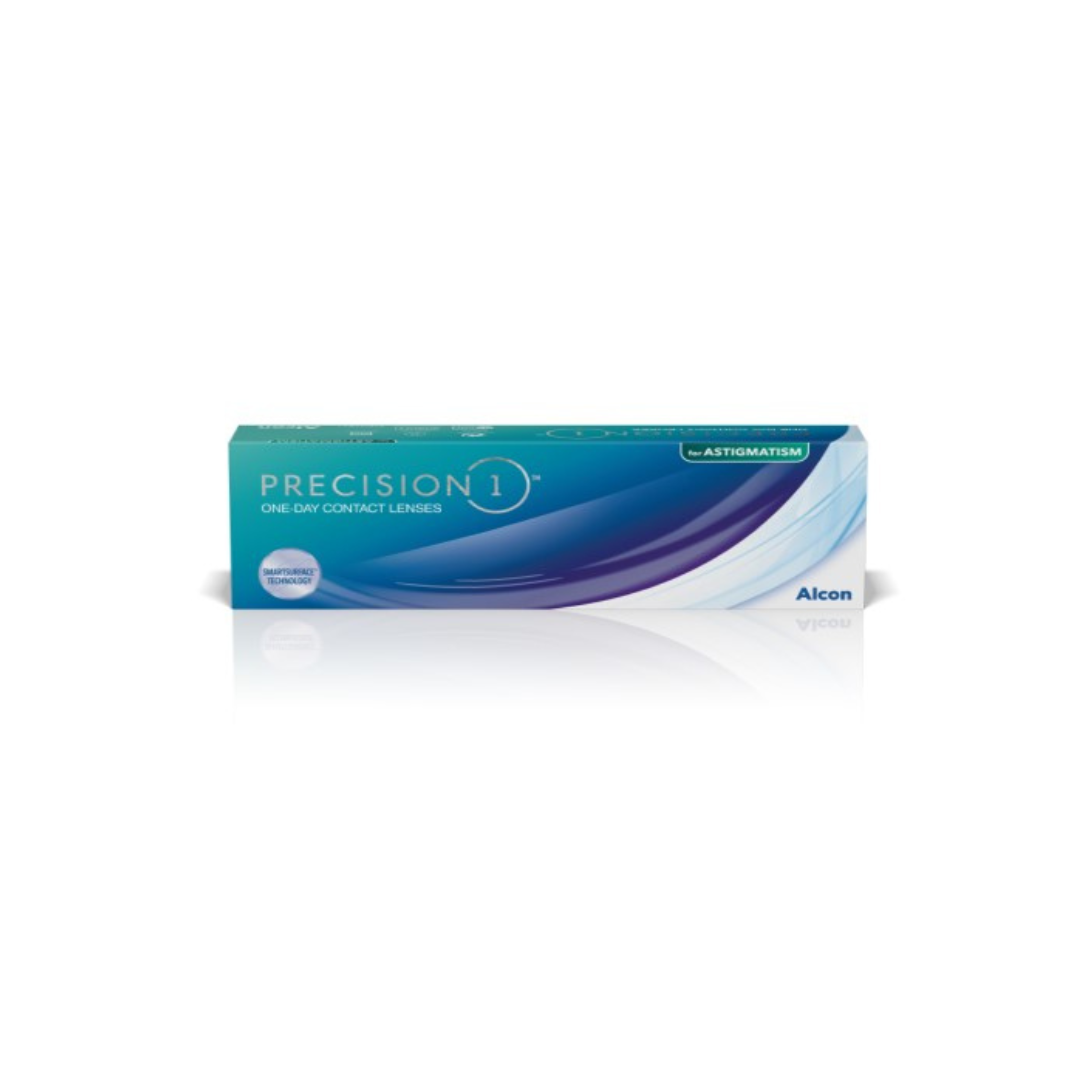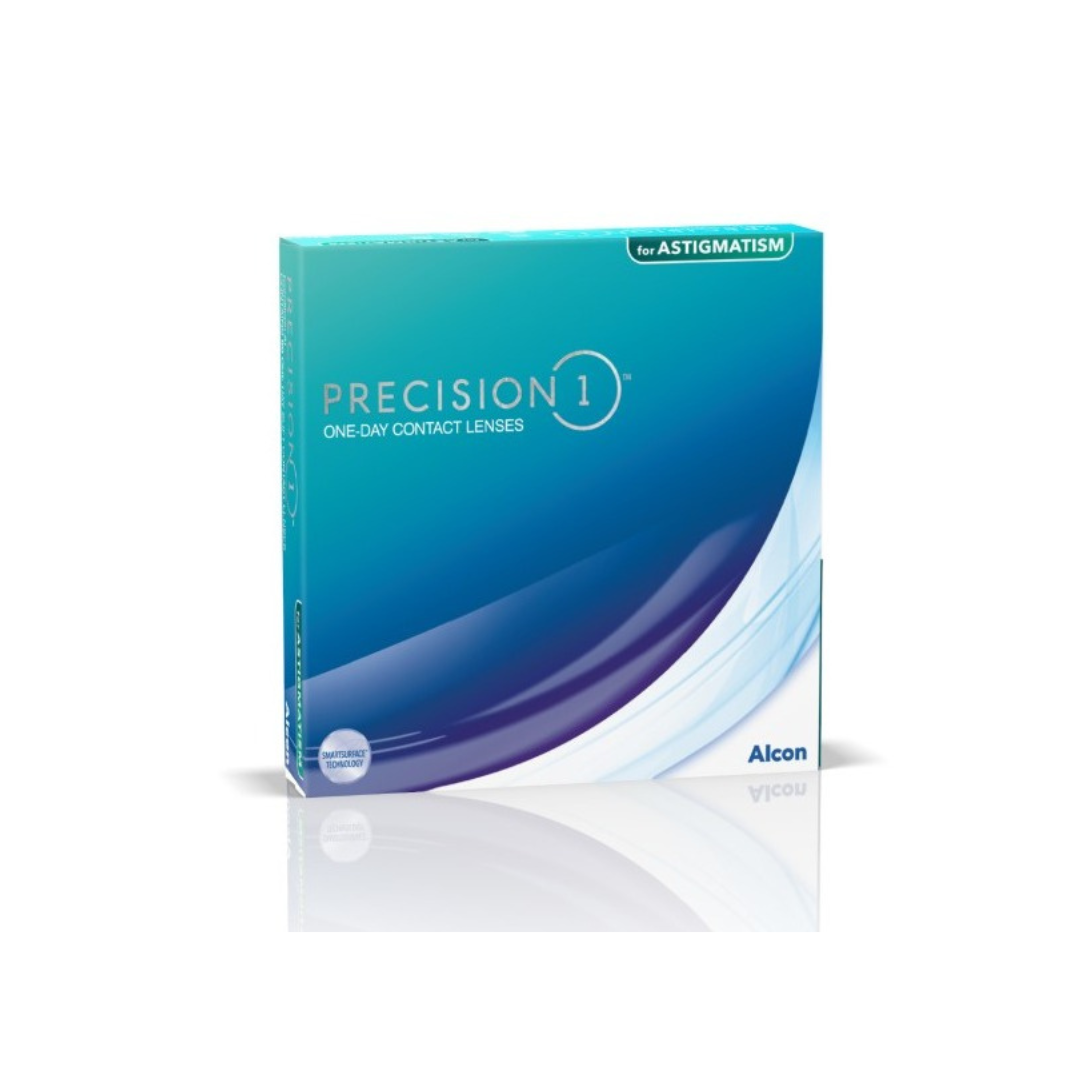PRECISION1® - ASTIGMATISM | Pack 30 & 90
- Prezzo regolare
-
£33.26 GBP - Prezzo regolare
-
- Il prezzo di liquidazione
-
£33.26 GBP

Essential Information
Lens Base Curvature:
- 8.5
Lens Diameter:
- 14.5
Durability:
- Daily
Lens Type:
- Toric & Astigmatism
Material:
- Verofilcon A
Manufacturer:
- Alcon
Detail Description
Experience precision vision for astigmatism with Precision1 for Astigmatism 30 & 90 pack by Alcon. Ideal for daily wear, this toric contact lens option offers 30 & 90 lenses per box, providing a convenient and reliable solution for astigmatism prescriptions.

- Lens Type: Toric
- Material: Verofilcon A
- Manufacturer: Alcon
- Water % of Content: 51
- Lens Curvature: 8.5
- Lens Diameter: 14.5
Key Features:
- SMARTSURFACE® Technology: Precision1 for Astigmatism lenses are crafted with SMARTSURFACE® Technology, ensuring intelligent and consistent performance in correcting astigmatism.
- Superior Water Gradient Technology: Leveraging the water gradient technology from DAILIES TOTAL1®, these silicone hydrogel lenses provide all-day moisture on the lens surface. With more than 51% water content, they offer exceptional comfort and breathability.
- 30 & 90 Lenses Per Box: Each box includes 30 & 90 lenses pack size, making it a practical choice for daily wear, eliminating the need for frequent reordering.
Benefits:
- Precise Astigmatism Correction: Tailored for astigmatism prescriptions, ensuring precise and clear vision.
- Intelligent Technology: SMARTSURFACE® Technology delivers consistent and reliable performance.
- All-Day Moisture: The water gradient technology provides continuous moisture for comfort and breathability.
- Convenient Daily Wear: With 30 & 90 lenses per box, these toric lenses offer a convenient and practical solution for daily wear.
Elevate Your Toric Experience: Choose Precision1 for Astigmatism 30 & 90 pack for a toric lens solution that combines precision, comfort, and convenience. Order now and enjoy clear vision with the benefits of intelligent technology.
| SPH | BC | DIA | CYL | AXIS | Boxes | |
|---|---|---|---|---|---|---|
| OD (Right) | SPH | BC | DIA | CYL | AXIS | Boxes |
| OS (Left) | SPH | BC | DIA | CYL | AXIS | Boxes |
Upload Your Prescription / Email Later with your order number to customerservice@ottikacanada.com
The maximum number of files is 2
Impossibile caricare la disponibilità del ritiro


Deciphering your contact lens prescription may seem daunting, but Ottika is here to guide you through the process. Below, we break down the key elements of your contact lens prescription to ensure you can confidently choose lenses that suit your vision needs.

1. Sphere (PWR or SPH):
- Denotes the main lens power needed to correct nearsightedness (negative values) or farsightedness (positive values).
- Measured in diopters (D); higher numbers indicate stronger prescriptions.
- Addresses astigmatism, a condition caused by an irregular cornea or lens shape.
- Positive or negative values signify the degree of astigmatism correction required.
- Specifies the angle (in degrees) for astigmatism correction.
- Ranges from 0 to 180; ensures proper alignment of the cylindrical power.
- Represents the curvature of the back surface of the contact lens.
- Ensures a comfortable fit on your eye; measured in millimeters.
- Indicates the width of the contact lens.
- Measured in millimeters; ensures proper coverage on your eye.
- Specifies the brand and material of the contact lens prescribed.
- Different materials offer varied comfort levels and oxygen permeability.
- Some contact lens prescriptions have an expiration date.
- Ensure your prescription is up-to-date for accurate vision correction.
- Sphere (PWR): -2.50
- Cylinder (CYL): -1.25
- Axis: 180
- Base Curve (BC): 8.6
- Diameter (DIA): 14.2
- The contact lens corrects myopia (nearsightedness) with a power of -2.50 diopters.
- Astigmatism correction is -1.25 at an axis of 180 degrees.
- The base curve is 8.6, and the diameter is 14.2.

PRECISION1® - ASTIGMATISM | Pack 30 & 90
- Prezzo regolare
-
£33.26 GBP - Prezzo regolare
-
- Il prezzo di liquidazione
-
£33.26 GBP


